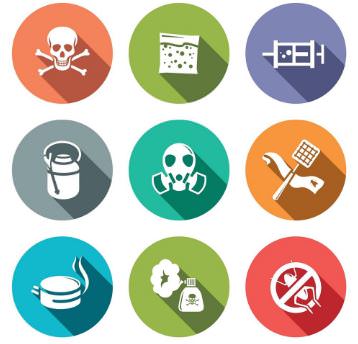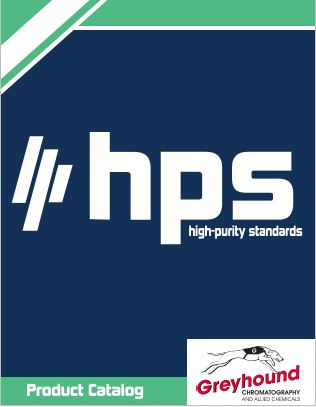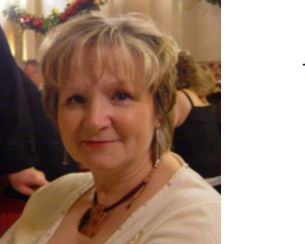USA Government report classifies four chemical compounds as carcinogens
The National Cancer Institute estimated that doctors will diagnose more than 1.6 million new cases of cancer in the United States in 2014. During this same time period, nearly 586,000 patients will die from these malignant diseases. The most common forms of cancer are prostate cancer, breast cancer, lung cancer, colorectal cancer, melanoma, bladder cancer and non-Hodgkin lymphoma.
Cancer is a complex disease with many potential causes, including hereditary genetic aberrations. However, carcinogens, such as radiation and a wide array of chemical compounds, also elevate individuals' risk levels. This underscores the importance of warning consumers about what chemical compounds are carcinogenic, how to avoid them and how to protect themselves when exposure is inevitable.
To that end the US Congress requires the National Toxicology Program to prepare a regular Report on Carcinogens for the Secretary of the U.S. Department of Health and Human Services. The most recent report, which is the 13th to be issued, draws attention to four substances in particular.
"Identifying substances in our environment that can make people vulnerable to cancer will help in prevention efforts," Linda Birnbaum, Ph.D., director of the National Institute of Environmental Health Sciences and the NTP, said in a statement. "This report provides a valuable resource for health regulatory and research agencies, and it empowers the public with information people can use to reduce exposure to cancer causing substances."
Any chemical compounds listed in the report are designated as known human carcinogens or reasonably anticipated human carcinogens. For the 13th Report on Carcinogens, the following four substances have been highlighted:
1. Ortho-toluidine
Ortho-toluidine is usually produced internationally and imported into the U.S., where it is used in pesticides, dyes, rubber chemicals and several other products, including medical items. Previously, ortho-toluidine was considered a reasonably anticipated human carcinogen since 1983. However, more recent studies made credible links between ortho-toluidine and urinary bladder cancer, prompting the NTP to reclassify it as a known human carcinogen.
According to the U.S. Centers for Disease Control and Prevention, individuals who work with ortho-toluidine must take several cautionary measures to minimize their contact with the substance. Butyl rubber gloves provide the best protection for handling ortho-toluidine. Additionally, workers need to remember to take advantage of workplace showers and surveillance programs, and refrain from taking work clothes home. Respirators that contain organic vapor cartridges, approved by the National Institute for Occupational Safety and Health, will protect the airways.
2. 1-bromopropane
1-bromopropane is a solvent that has been used for aerosol-applied adhesives and aircraft maintenance. It can also clean optics, electronics and metals. Additionally, the U.S. Department of Labor noted that 1-bromopropane can be found in products used for dry cleaning and asphalt production. The NTP designated 1-bromopropane as a reasonably anticipated human carcinogen after laboratory experiments revealed it caused tumors to develop in rodents. No studies have made such a connection among humans.
1-bromopropane is more likely to impact workers in various fields rather than individuals in the general population. According to the DOL, there are several short-term health problems associated with this substance. Workers who breathe in its vapors may experience headaches, dizziness, confusion, difficulty walking or talking, loss of muscle control in the limbs or loss of consciousness. The chemical may also irritate the eyes, mucous membranes and skin.
3. Cumene
Cumene is a natural component of coal tar and petroleum that is also present in tobacco smoke. Different manufacturers will use it in the production of acetone and phenol. Exposure is most likely to occur in places where cumene is produced. Laboratory studies showed that cumene may cause tumors to form in the lungs and livers of rodents, but no such human studies exist. Therefore, the NTP designated cumene as a reasonably anticipated human carcinogen.
According to the CDC, there are several devices that can protect workers from inhaling cumene vapors, depending on the level of exposure. These products include respirators with face masks and self-contained breathing apparatuses.
4. Pentachlorophenol and by-products of its synthesis
Pentachlorophenol has been a restricted-use pesticide in the U.S. since the 1980s. The substance also treats lumber and timber used for construction purposes, as well as utility poles, fence posts and wood pilings. Individuals who work with such products are likely to be exposed to pentachlorophenol, but people in the general public may also inhale dust from treated products or contaminated soil. Animal studies of this chemical showed tumors forming in mice, and human studies suggested it raises the risk of non-Hodgkin's lymphoma, prompting the NTP to classify it as a reasonably anticipated human carcinogen.
According to the U.S. Environmental Protection Agency, wood-preserving factories need to make sure they do not release this chemical into drinking water sources. The maximum contaminant level of pentachlorophenol is 1 part per billion.
The NTP pointed out that exposure to these chemicals will not necessarily in and of itself cause cancer. The level of risk is tied to amount and duration of exposure, as well as individuals' predisposition to malignant disease.
CONTACT US
Tel: +44 (0) 151 649 4000
Email: marketing@greyhoundchrom.com
FOLLOW US
YOU MAY ALSO BE INTERESTED IN OUR NEWSLETTER
About the Author
Susan Massie, Sales & Marketing Director, Greyhound Chromatography and Allied Chemicals Email: sue@greyhoundchrom.com
Susan Massie is the Sales & Marketing Director for Greyhound Chromatography and Allied Chemicals, affectionately known as 'Greyhound' in our scientific community. Greyhound was founded by Susan's husband Paul Massie more than 40 years ago, Susan hasn't been in the business for all of that time but has been involved with Greyhound for over 17 years. Greyhound continues to grow, expanding into new markets and taking on the challenges of our ever changing environment. It's heartwarming to witness the world waking up to the fact that we are damaging our planet on a daily basis. Every action we take has a direct effect on our planet and the world we leave behind for future generations. Susan is passionate about climate change and is happy to work in an industry that can have a direct effect on reducing the impact of our actions on the environment. All of the team at Greyhound take our responsibilities very seriously, the products that we supply are used by the world's leading scientists and chemists as they endeavour to monitor and repair the environment. All is not lost, if we all take responsibility for our actions, from reducing our waste and reusing or recycling our material collateral we can make a difference. The internet is full of useful advice and guidance, Susan is proud to contribute to that wealth of knowledge whenever she can.
Greyhound prides itself on personal service which provides prompt, efficient, cost-effective, safe delivery of all products. Greyhound provides technical advice and distribution of Certified Reference Standards and Materials, Laboratory Consumables, Solvents and Reagents across all scientific disciplines. Greyhound Chromatography offers over 1 Million products from its UK warehouse. The team at Greyhound are proud to support the work of the world's leading scientists and chemists as they challenge the abuse of our planet and try to make a difference to the world we leave behind for our ancestors.
You can view Susan's Linked In Profile here https://www.linkedin.com/in/susan-massie-79ab4121/


















